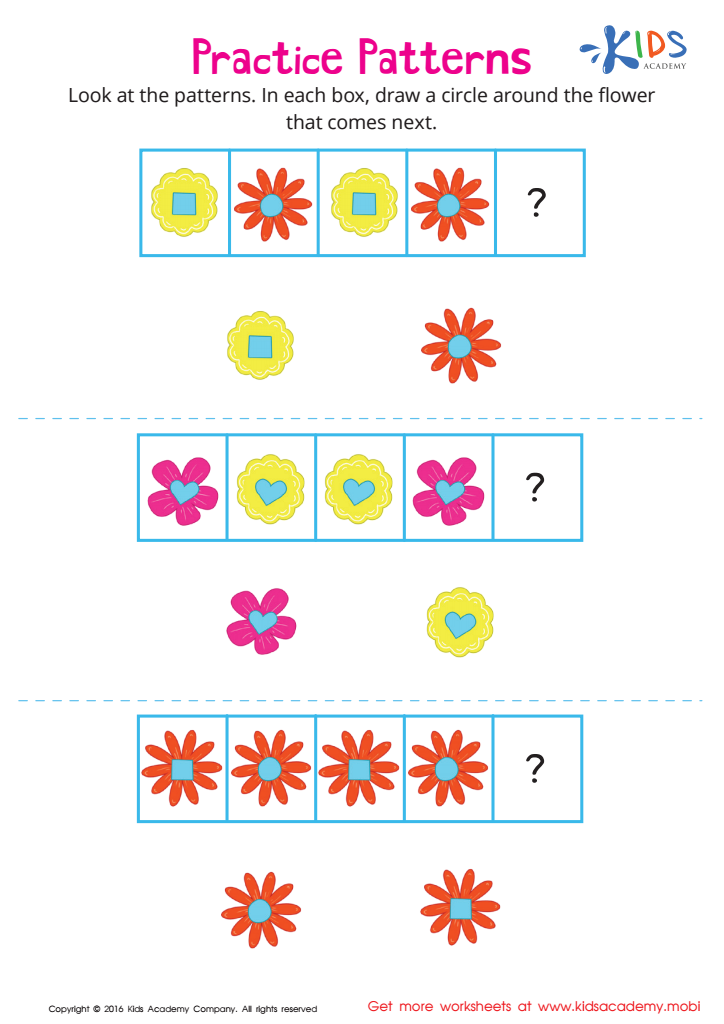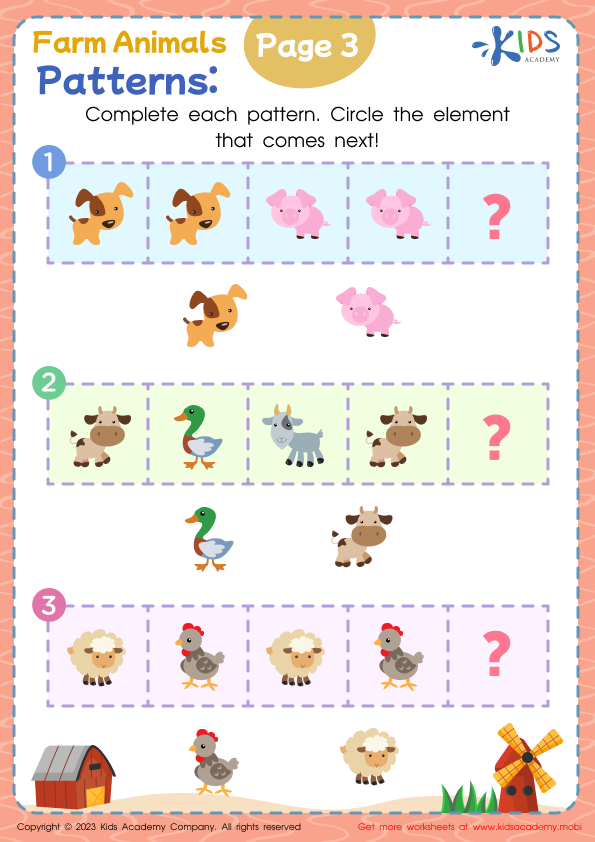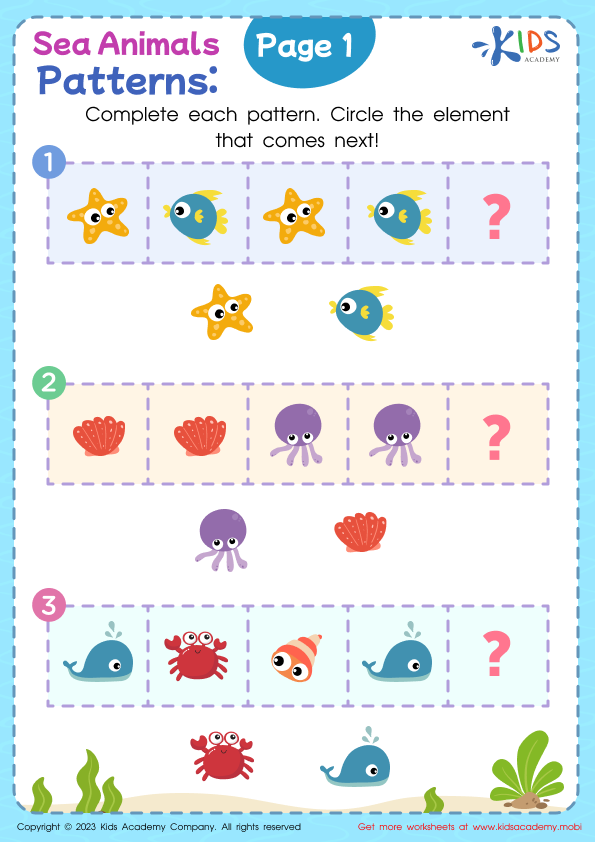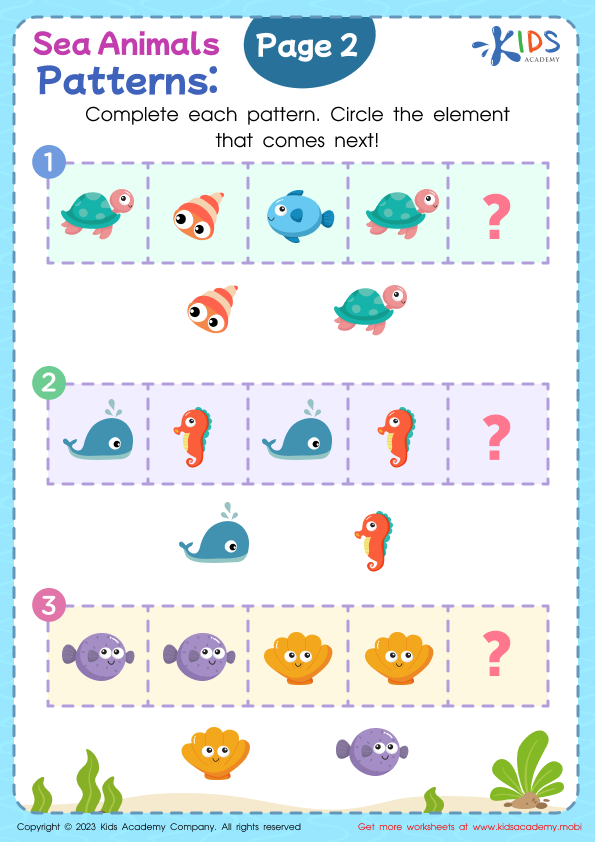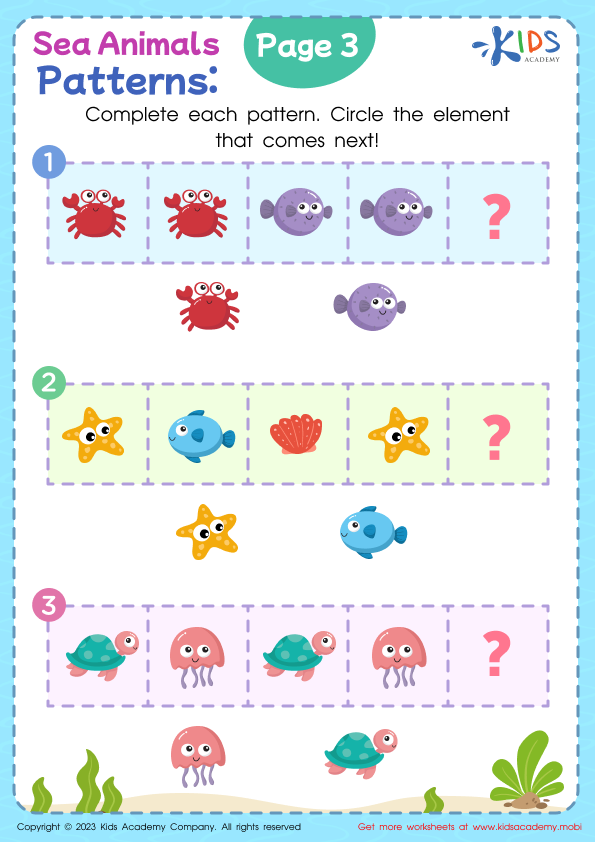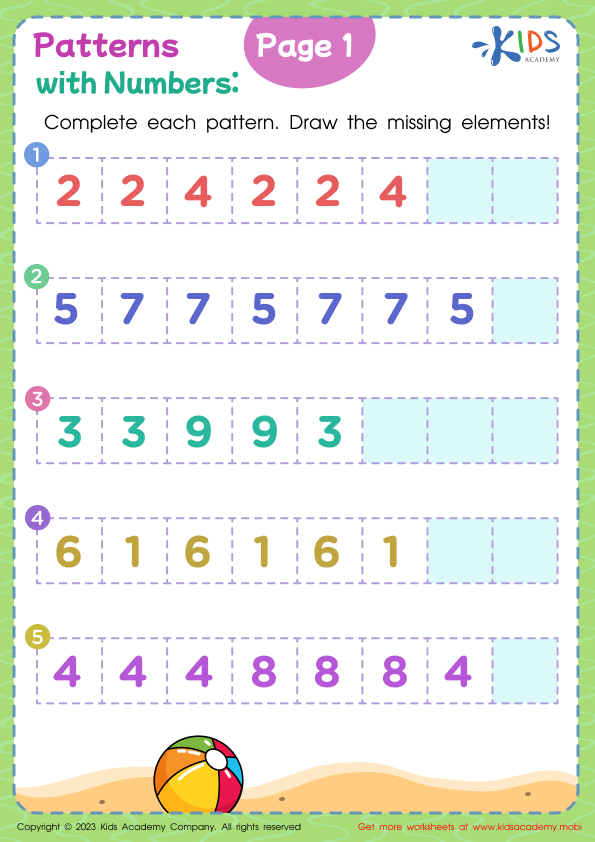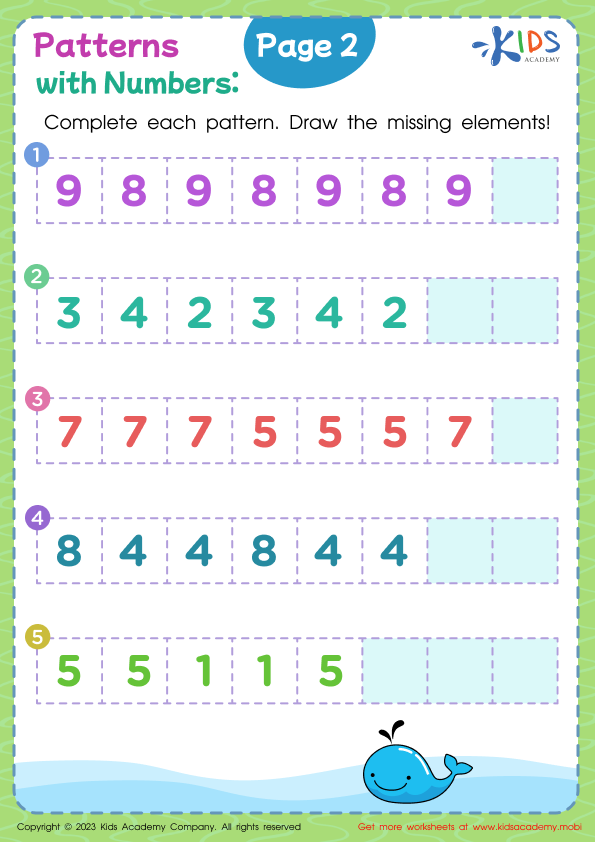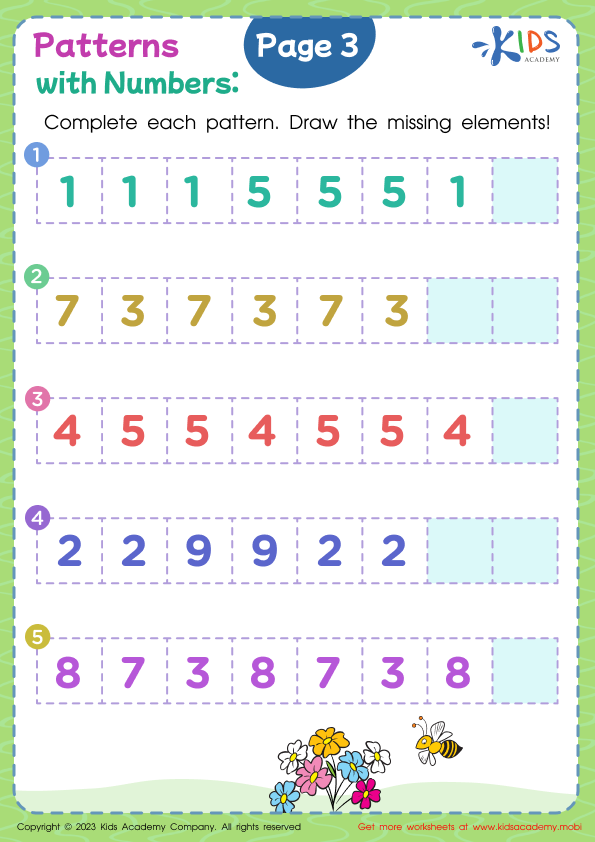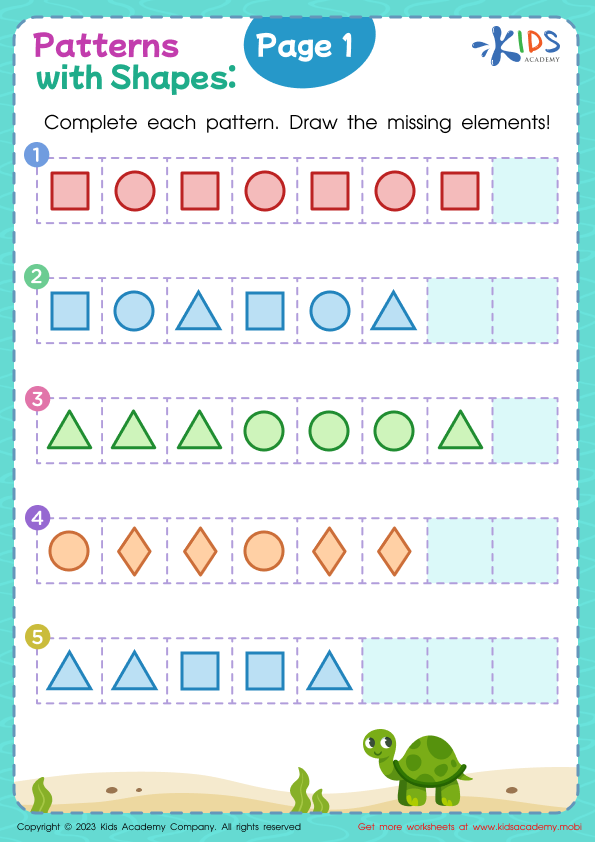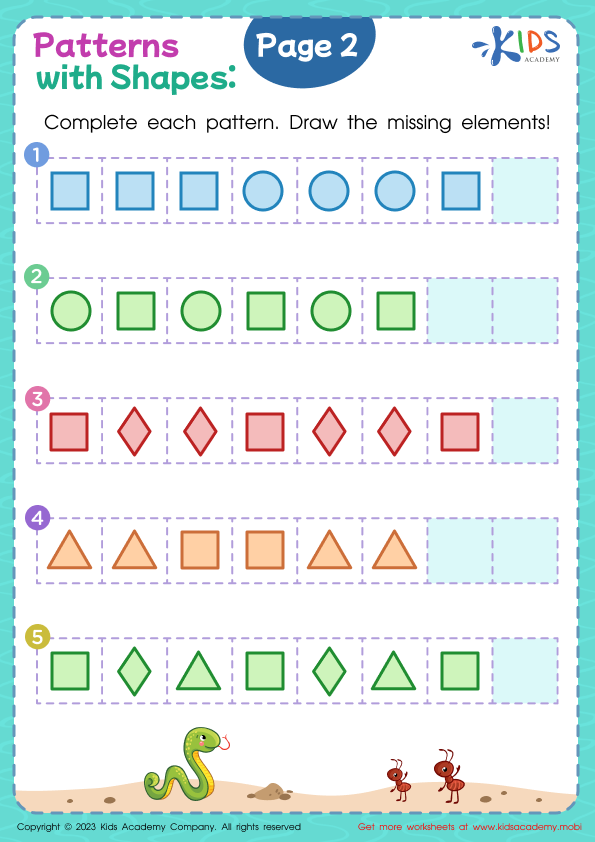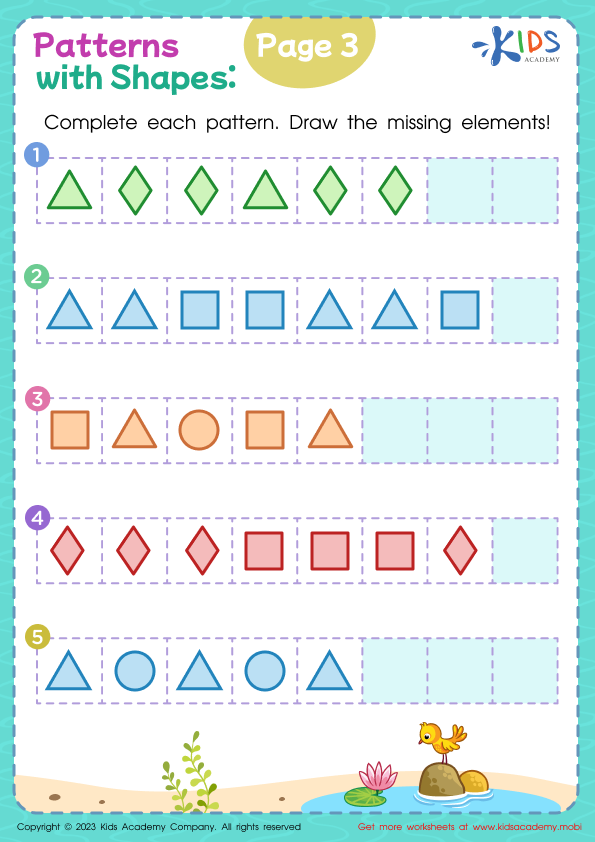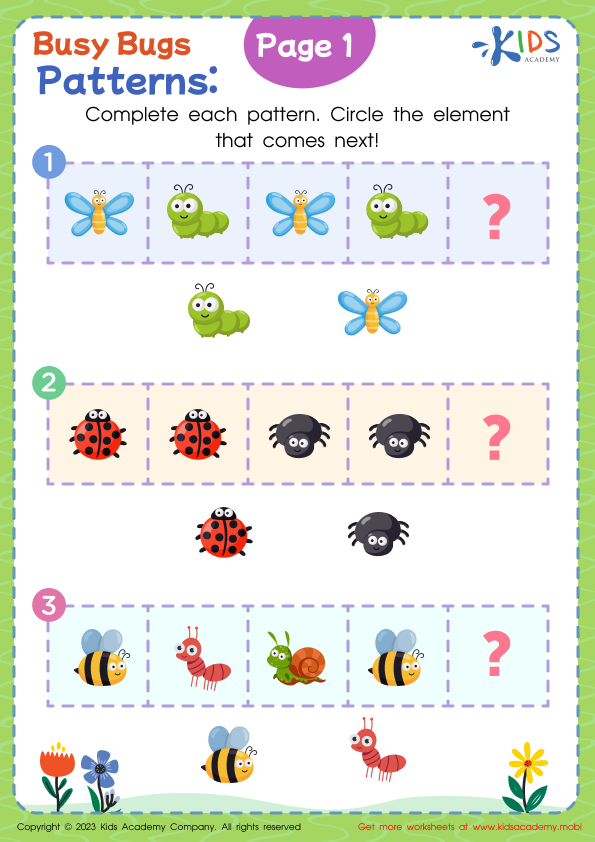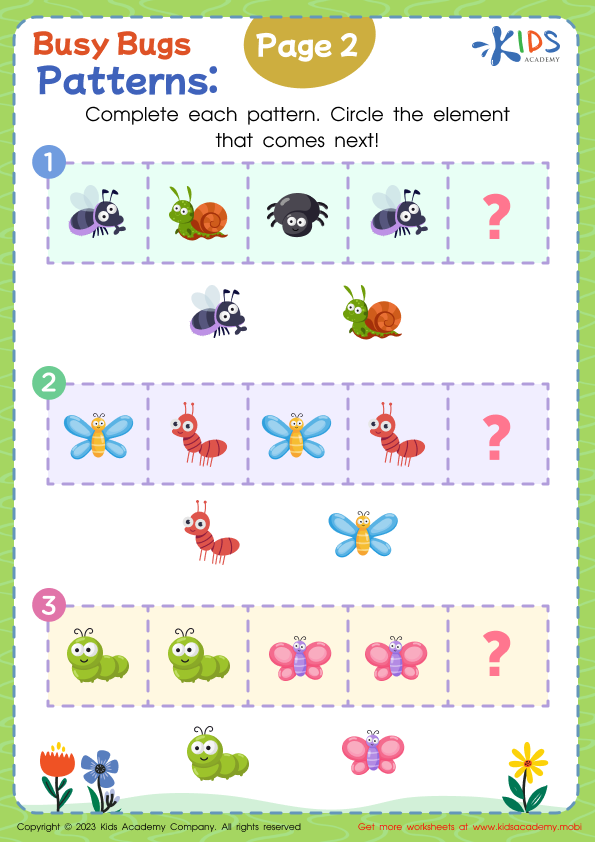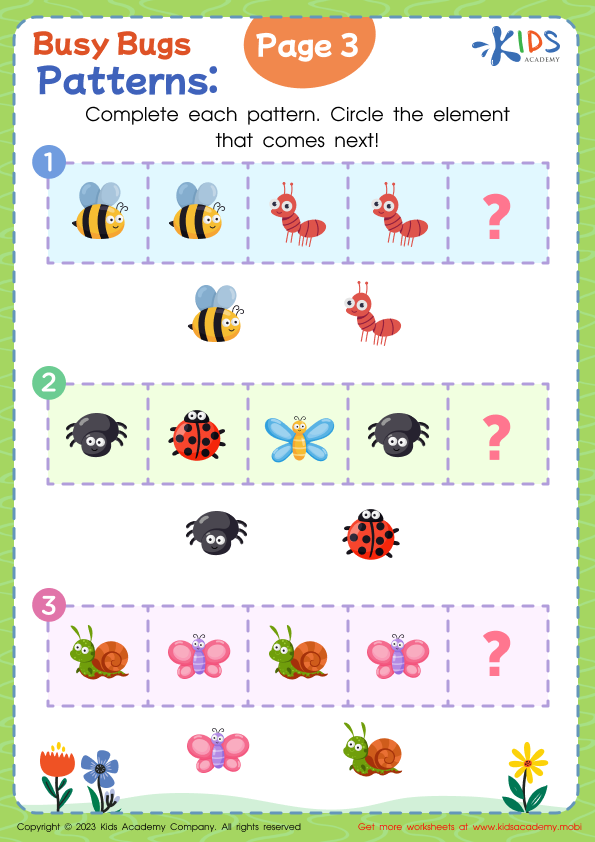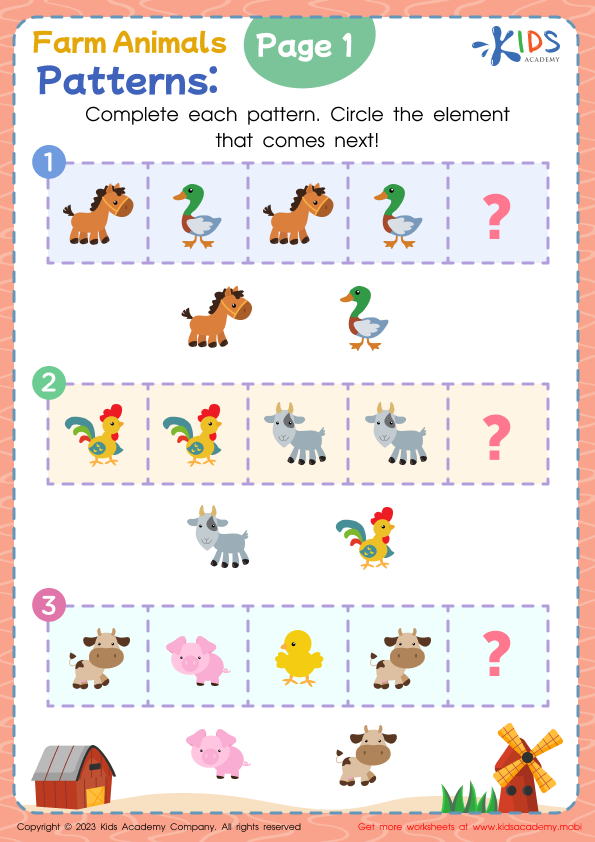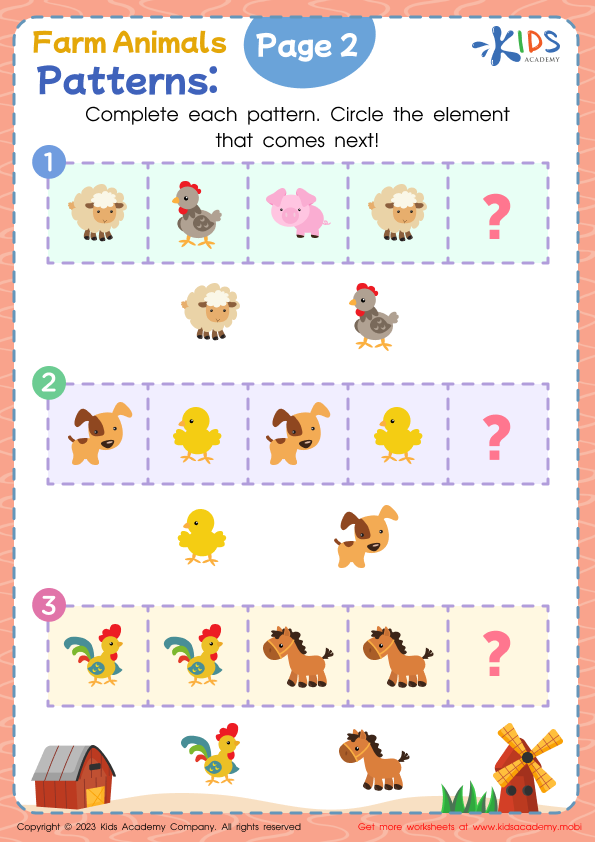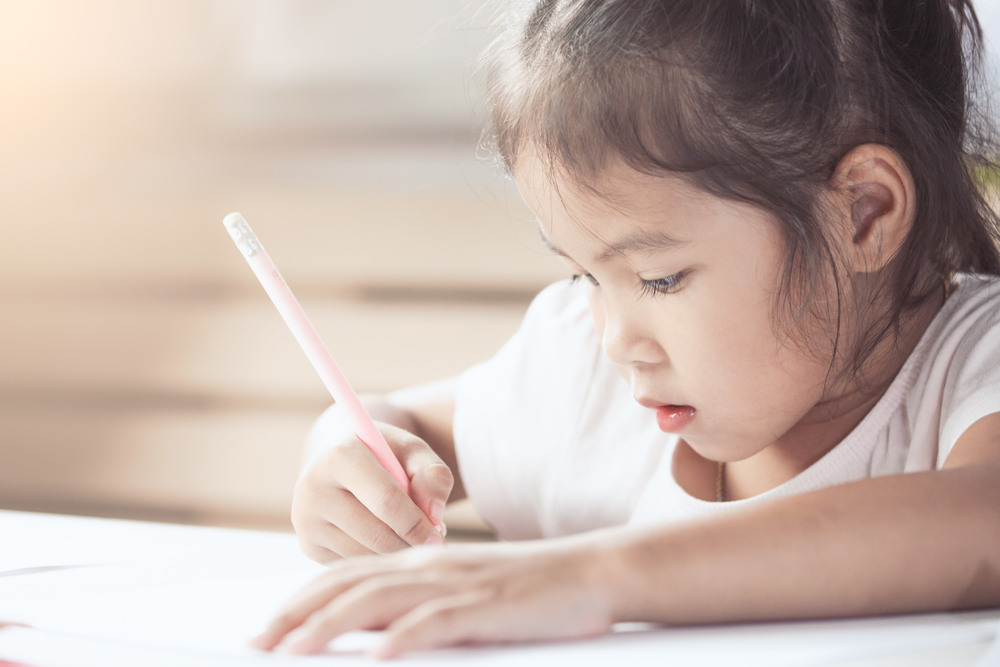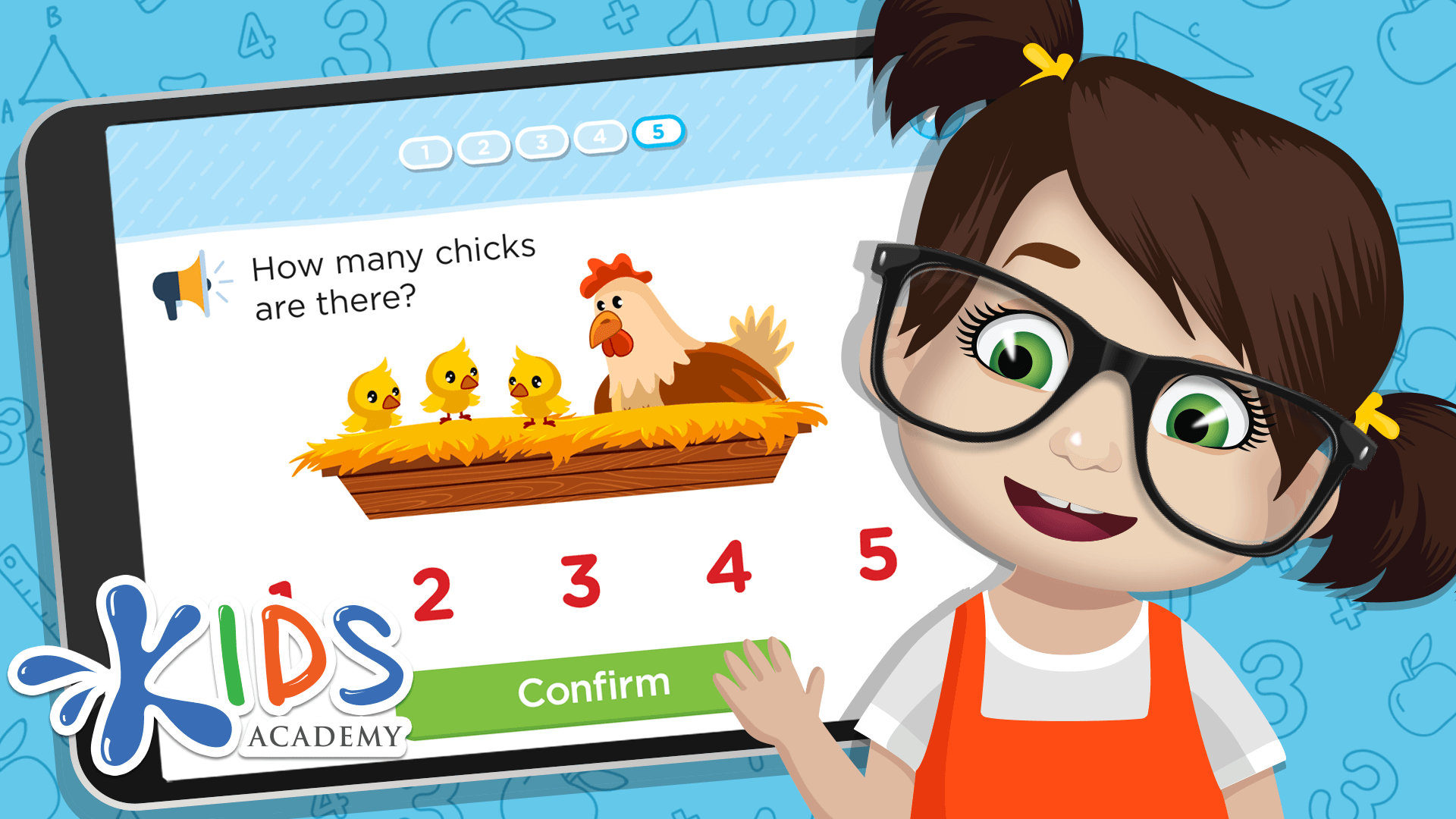Patterns Worksheets for Ages 4-8
21 filtered results
-
From - To
Discover a world of fun and engaging Patterns Worksheets designed specifically for children aged 4-8. These printable resources help young learners recognize, create, and extend patterns using colorful visuals and interactive activities. Our worksheets focus on essential math skills while keeping children entertained and motivated. Ideal for both classroom and home use, these materials support early development in critical thinking and problem-solving. From simple color patterns to more complex sequences, our carefully crafted exercises cater to various skill levels, ensuring that every child can learn at their own pace. Explore our collection today and make learning patterns enjoyable and effective!
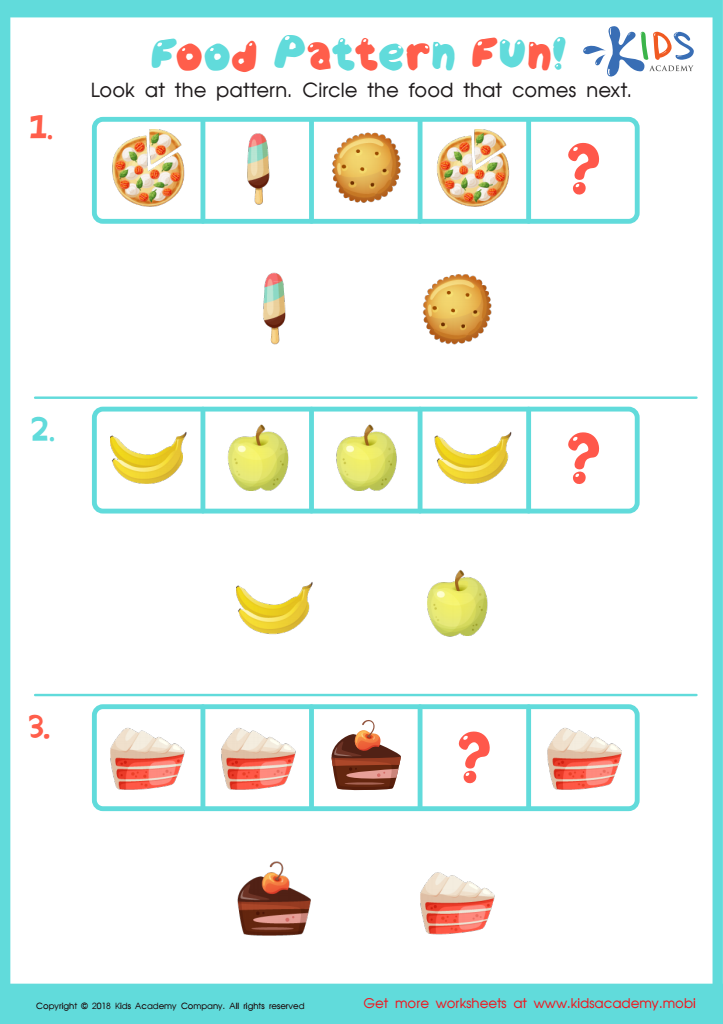

Food Pattern Fun Worksheet
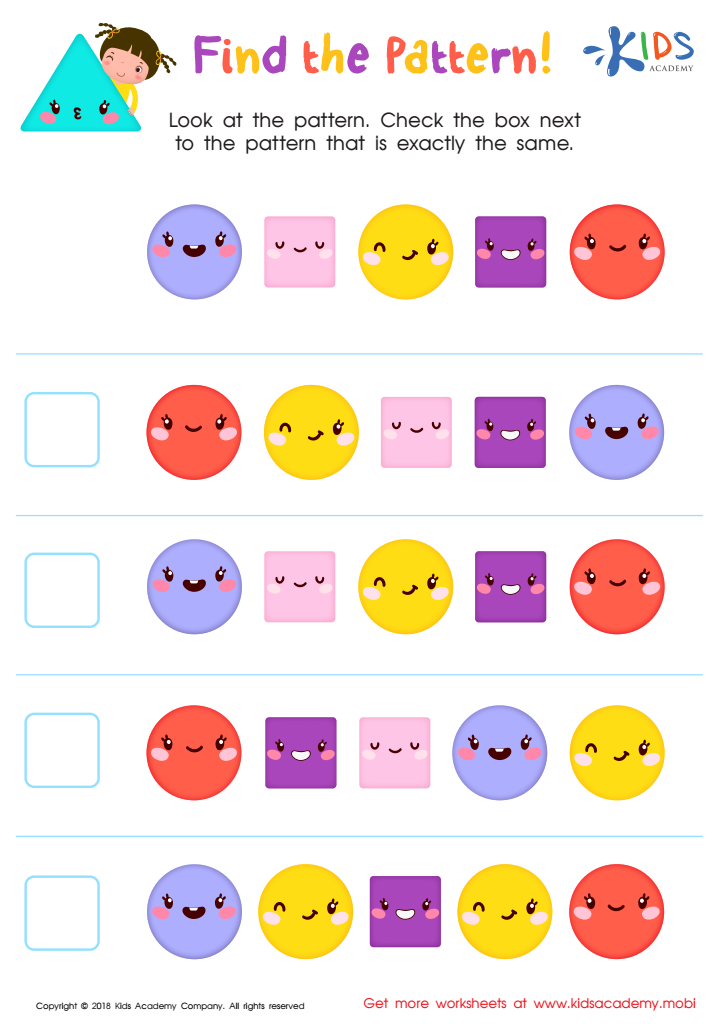

Find the Pattern Worksheet
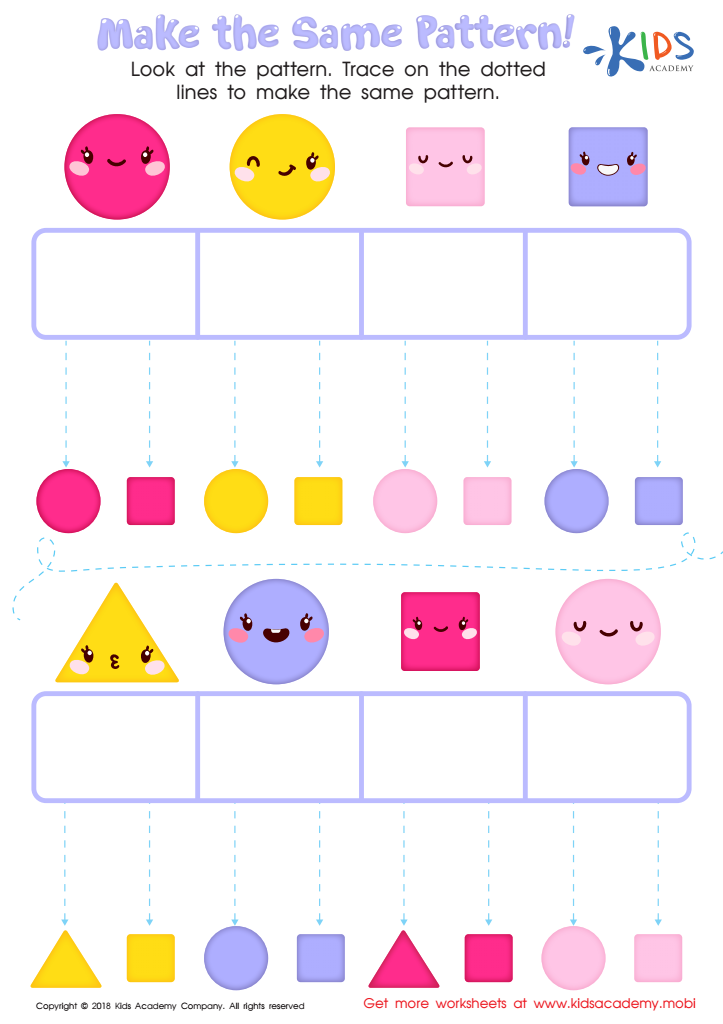

Make the Same Pattern Worksheet
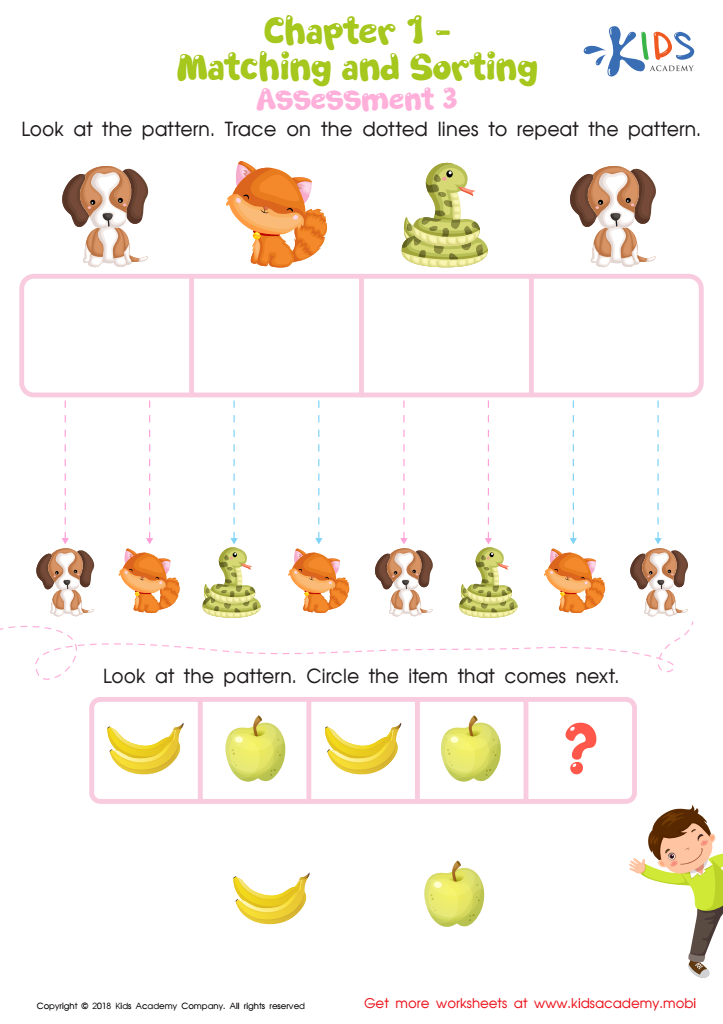

Matching and Sorting for Preschool: Assessment 3 Worksheet


Shape Pattern Fun Worksheet
Understanding patterns is crucial for children aged 4-8, as it lays the foundation for many essential mathematical and cognitive skills. Parents and teachers should care about patterns for several reasons.
Firstly, recognizing and creating patterns helps develop critical thinking and problem-solving abilities. Children learn to identify relationships and make predictions based on order and repetition. This skill enhances their logical reasoning, which is fundamental not only in math but across various subjects and real-life situations.
Secondly, working with patterns encourages creativity. When children experiment with colors, shapes, or sounds to create patterns, they engage in imaginative play and expression. This combination of analytical and creative thinking supports a well-rounded educational experience.
Additionally, patterns are prevalent in everyday life, from nature to art and music. By fostering an understanding of patterns, adults can help children connect their learning to the world around them, making education more meaningful and relatable.
Lastly, early exposure to patterns lays the groundwork for advanced topics in mathematics, such as algebra and geometry. By nurturing pattern recognition skills, parents and teachers are investing in the overall academic success and future learning potential of their children.
 Assign to My Students
Assign to My Students
